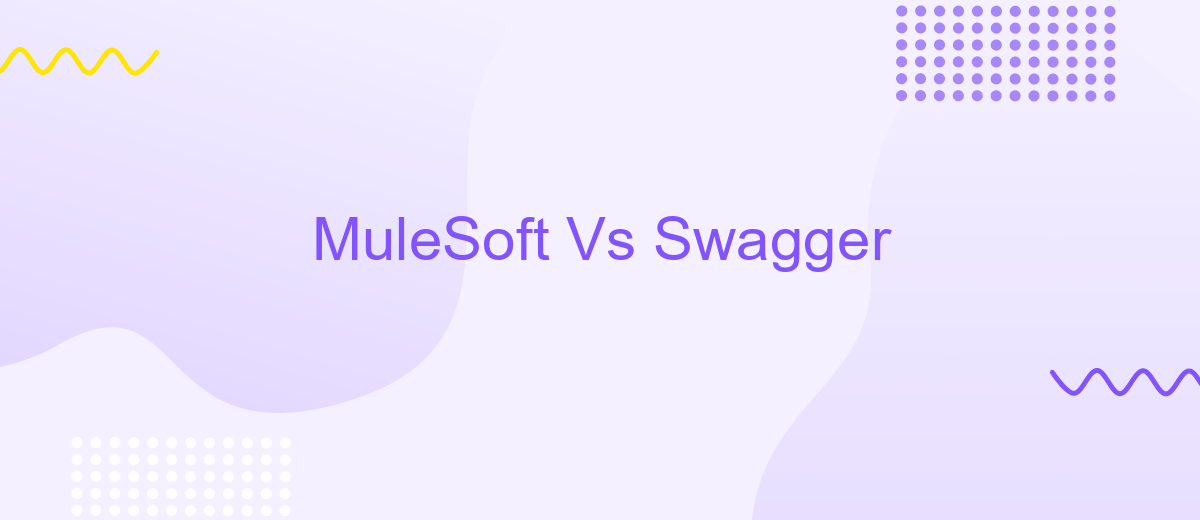MuleSoft Vs Swagger
When it comes to API development and management, two tools often come to the forefront: MuleSoft and Swagger. Both offer robust solutions for creating, deploying, and managing APIs, but they cater to different needs and use cases. This article delves into the key differences, advantages, and limitations of MuleSoft and Swagger, helping you make an informed choice for your API strategy.
Introduction
In today's rapidly evolving digital landscape, the need for efficient API management and integration tools has never been greater. MuleSoft and Swagger are two prominent names in this domain, each offering unique capabilities to streamline API development and integration processes. Understanding the differences and strengths of these tools is crucial for businesses aiming to enhance their digital ecosystems.
- MuleSoft: Known for its robust Anypoint Platform, MuleSoft provides comprehensive solutions for API management, integration, and analytics.
- Swagger: Primarily focused on API design and documentation, Swagger offers a suite of tools that simplify the creation, testing, and deployment of APIs.
- ApiX-Drive: A versatile integration service that connects various applications and automates workflows, enhancing the efficiency of API management.
Choosing between MuleSoft and Swagger depends on specific business needs, such as the complexity of integration requirements and the emphasis on API documentation. Additionally, services like ApiX-Drive can complement these tools by providing seamless integration capabilities, ensuring that businesses can achieve their digital transformation goals effectively.
Features and Functionality

MuleSoft offers a robust integration platform that enables businesses to connect applications, data, and devices with ease. Its Anypoint Platform provides a comprehensive suite of tools for API design, development, and management, making it a powerful solution for complex integration projects. MuleSoft's features include data transformation, orchestration, and real-time analytics, which allow organizations to streamline their workflows and enhance operational efficiency. Additionally, its support for various protocols and standards ensures seamless interoperability across different systems.
Swagger, on the other hand, is primarily focused on API documentation and design. It provides an intuitive interface for creating and visualizing RESTful APIs, making it easier for developers to understand and implement API specifications. Swagger's features include auto-generated documentation, interactive API exploration, and code generation for multiple programming languages. While it excels in API design and documentation, Swagger lacks the comprehensive integration capabilities found in MuleSoft. For those looking to set up integrations quickly and efficiently, services like ApiX-Drive can complement Swagger by automating data transfer between different applications and services, thereby simplifying the integration process.
Comparison Table

When comparing MuleSoft and Swagger, it's essential to understand the key differences and similarities between these two tools. Both are widely used in the field of API management and integration, but they serve different purposes and have unique features.
- Purpose: MuleSoft is a comprehensive integration platform, while Swagger focuses on API documentation and design.
- Usability: MuleSoft offers a broad range of integration capabilities, whereas Swagger is more user-friendly for API documentation.
- Features: MuleSoft includes data mapping, transformation, and orchestration, while Swagger provides interactive API documentation and testing tools.
- Integration: MuleSoft supports various integration patterns and connectors, whereas Swagger can be complemented with tools like ApiX-Drive for enhanced integration capabilities.
- Cost: MuleSoft typically requires a higher investment due to its extensive features, while Swagger offers a more cost-effective solution for API documentation.
In conclusion, choosing between MuleSoft and Swagger depends on your specific needs. If you require a robust integration platform, MuleSoft is the better choice. However, for streamlined API documentation and design, Swagger is more suitable. Tools like ApiX-Drive can further enhance integration processes by automating data transfer between different applications and services.
Use Cases and Applications

MuleSoft and Swagger are two powerful tools widely used in the world of API management and development. MuleSoft is renowned for its ability to connect various systems and applications, making it a go-to choice for enterprise-level integrations. Swagger, on the other hand, excels in API documentation and design, providing developers with a clear and concise way to describe their APIs.
One of the primary use cases for MuleSoft is in large organizations that need to integrate multiple systems, such as CRM, ERP, and other business applications. Its robust platform allows for seamless data flow and process automation across different environments. Swagger is often used by developers who need to create well-documented APIs that are easy to understand and use by other developers or third-party services.
- MuleSoft: Enterprise-level integrations, connecting various business applications.
- Swagger: API documentation, design, and testing.
- ApiX-Drive: Automating data transfer between different services and applications.
Both tools can be used in tandem for a comprehensive API management solution. For instance, an organization might use MuleSoft to handle complex integrations and ApiX-Drive to automate data transfer, while leveraging Swagger for API documentation. This combination ensures efficient and well-documented API ecosystems that are easy to manage and scale.
Conclusion
In conclusion, both MuleSoft and Swagger provide robust solutions for API management and development, each with its unique strengths. MuleSoft excels in offering a comprehensive integration platform that supports a wide range of applications and services, making it an excellent choice for enterprises looking to streamline complex workflows. On the other hand, Swagger stands out for its simplicity and ease of use, particularly in API documentation and testing, which is invaluable for developers aiming to create clear and maintainable APIs.
For those seeking to enhance their integration capabilities further, services like ApiX-Drive can be incredibly beneficial. ApiX-Drive offers a user-friendly interface and powerful tools for automating and managing integrations, making it easier to connect various applications and services seamlessly. By leveraging such tools, organizations can optimize their API strategies, ensuring efficient and effective communication between different systems. Ultimately, the choice between MuleSoft and Swagger will depend on specific business needs and technical requirements, but both platforms offer substantial value in the realm of API management.
- Automate the work of an online store or landing
- Empower through integration
- Don't spend money on programmers and integrators
- Save time by automating routine tasks
FAQ
What are the primary differences between MuleSoft and Swagger?
Can MuleSoft and Swagger be used together?
Which platform is better for API documentation?
Is MuleSoft suitable for small businesses?
Are there any services that can help with the integration and automation of APIs?
Apix-Drive is a simple and efficient system connector that will help you automate routine tasks and optimize business processes. You can save time and money, direct these resources to more important purposes. Test ApiX-Drive and make sure that this tool will relieve your employees and after 5 minutes of settings your business will start working faster.


